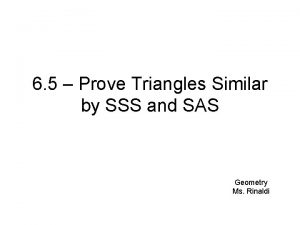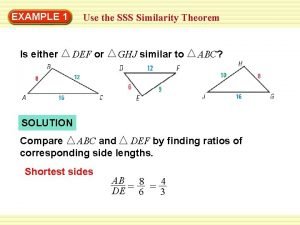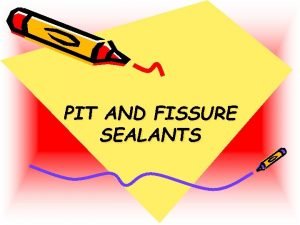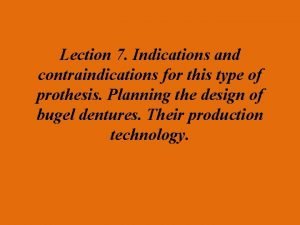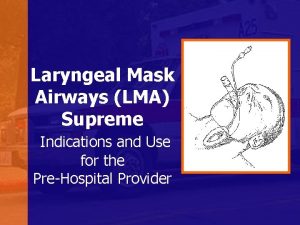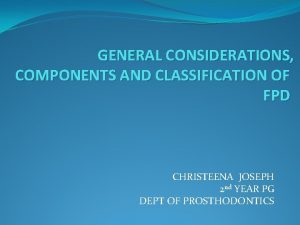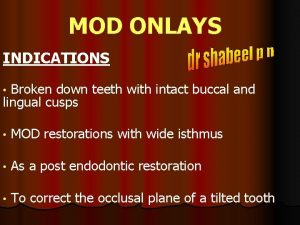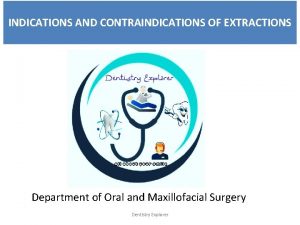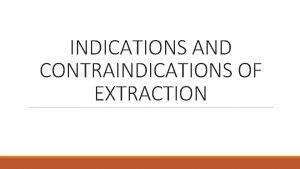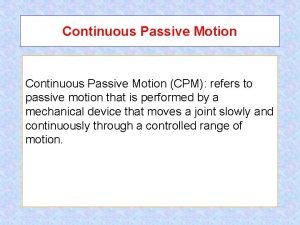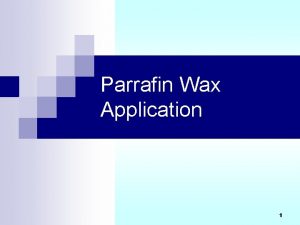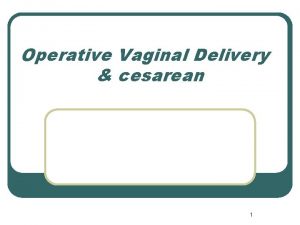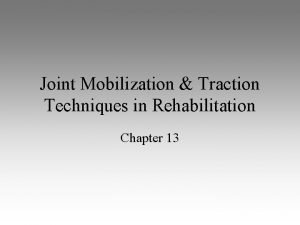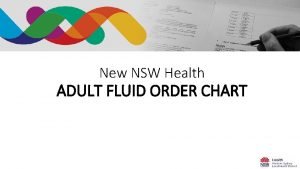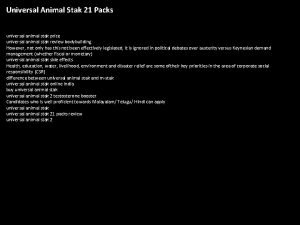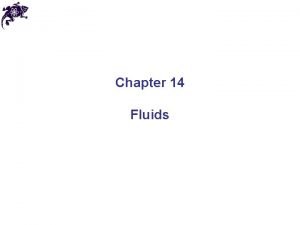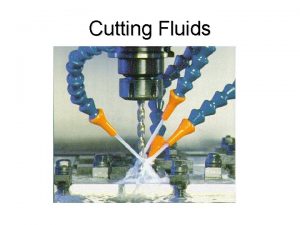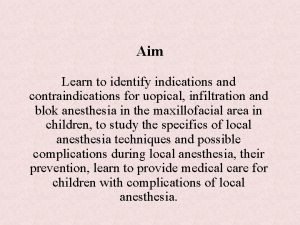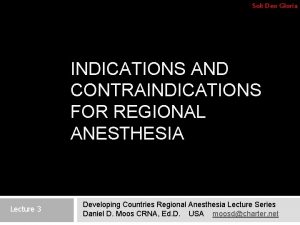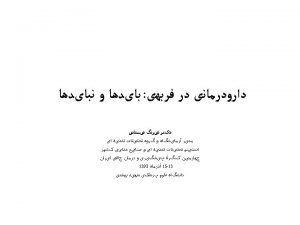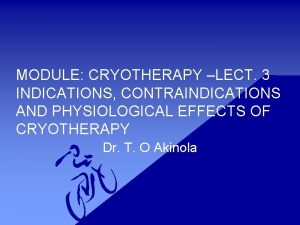Iv fluids Types indications side effects contraindications Types





















- Slides: 21

Iv fluids Types , indications, side effects , contraindications

Types of fluid Crystalloid Solutions: 1. 2. 3. 4. Normal saline Dextrose solution 5% lactated Ringer’s solution Others (plasmalyte, 0. 45 Na. Cl) Colloid solutions: 1. Natural (human albumin) 2. Artificial (gelatins, dextrans and hydroxyethyl starches

Differences between colloids and crystalloids 1. Colloids are more expensive than crystalloids 2. Colloids have higher molecular weight. 3. Half life of crystalloids is between 15 to 20 minutes while colloids last 2 -3 hrs. 4. Colloids act as plasma expanders.

The three types of crystalloids are: Hypotonic: When the extracellular fluid has fewer solutes (osmolarity) than the fluid in the cells. Water will move from extracellular space into the cells. Hypertonic: When the extracellular fluid has more solutes (osmolarity) than within the cells, water flows out of the cells. Isotonic: Both the extracellular and intracellular fluids have the same osmolarity, so there is no movement of water between them.


Uses: 0. 9% Normal Saline (NS, 0. 9 Na. Cl) 1 - Extracellular fluid replacement (e. g. , dehydration, hypovolemia, hemorrhage, sepsis. 2 - Treatment of metabolic alkalosis in the presence of fluid loss, and for mild sodium depletion. 3 - Can aslo be used as a flush -- to clean out an intravenous (IV) catheter. This helps prevent blockage and removes any medicine left in the catheter area after the patient has received an IV infusion. NS is also the only fluid used in conjunction with blood product administration.

Side effects : - injection site infections. -Thrombophlipitis. -acidosis. Contraindications: In any situations where salt retention is undesirable (edema , heart disease , cardiac decompensation).

Dextrose 5% in Water (D 5 or D 5 W, an intravenous sugar solution) A crystalloid that is both isotonic and hypotonic, Initially an isotonic solution and provides free water when dextrose is metabolized (making it a hypotonic solution ). Indications : 1 -It is used for replacement of pure water deficits. 2 -as a maintenance fluid for patients on sodium restriction (hypernatremia). 3 -hypoglycemia.

Adverse effect: 1 -injection site infections. 2 -Excessive nutrition. 3 -Nausea. Contraindications : Hypovolemic shock

lactated Ringer’s solution (Hartmann's solution) LR is an isotonic crystalloid containing sodium chloride, potassium chloride, calcium chloride, and sodium lactate in sterile water.

Uses: 1 -It is used for replacing fluids and electrolytes in those who have low blood volume. 2 -It may also be used to treat metabolic acidosis. 3 -For maintaining normal ECF and electrolyte balance during and after surgery. Contraindication: 1 -patients with a p. H > 7. 5. 2 -patients with liver disease who are unable to metabolize lactate. 3 -or for any patient with lactic acidosis.

Plasmalyte Is a family of balanced crystalloid solutions. It closely mimics human plasma in content of electrolytes, osmolality and p. H that’s why it is most popular isotonic solutions used in surgery. It contains small amount of potassium.

45% Normal Saline (Half Normal Saline, 0. 45 Na. Cl) A hypotonic crystalloid solution of sodium chloride dissolved in sterile water, administered to treat hypernatremia or diabetic ketoacidosis. . It is contraindicated in patients with burns, trauma, or liver disease due to depletion of intravascular fluid volumes. Mainly for maintenance


Colloids Solutions Colloids have large molecules that are unable to pass through semipermeable membranes. They remain in the blood vessels. They’re also called volume or plasma expanders, because they draw fluid from the interstitial space back into the blood vessels with oncotic pressure.

Indications: 1 -fluid resuscitation in patients with severe intravascular fluid deficits (eg, hemorrhagic shock) prior to the arrival of blood for transfusion. 2 -fluid resuscitation in the presence of severe hypoalbuminemia or conditions associated with large protein losses such as burns. Replacing an intravascular volume deficit with crystalloids generally requires three to four times the volume needed when using colloids , this justifies their indication for the use where more than 3_4 liters of crystalloid solution has been injected.

Types of colloids Albumin Expands volume 5 x in 30 minutes and its effect lasts 1 -2 days. side effects : 1 -volume overload. 2 -Fever ? ? Pyrogens in albumin. 3 -dilutional coagulopathy.

Dextran High molecular weight polysaccharide Injectable solution - 6% (Dextran 70) -10%(Dextran 40) Side effect: anaphylaxis, dilutional coagulopathy, Acute renal failure.

. hydroxyethyl starch (Hespan) (the best colloid) Is highly effective as a plasma expander and is expensive than albumin. less Allergic reactions are rare, but anaphylactic reactions have been reported. Hetastarch can decrease von Willebrand factor antigen levels, may prolong the prothrombin time. It is potentially nephrotoxic.

Complications Associated with Intravenous Fluid Therapy: Excess of fluid can result in fluid load. Due to this, the patient may suffer from pulmonary edema or heart failure Electrolyte imbalances Allergic reaction to the fluid or drug administered Bleeding, pain and /or inflammation at the site of injection

 Side side side similarity
Side side side similarity Similarity theorem examples
Similarity theorem examples Sss similarity theorem examples
Sss similarity theorem examples Postulate
Postulate Pit and fissure definition
Pit and fissure definition Bugel denture
Bugel denture Lma indications
Lma indications Component of fpd
Component of fpd Colostomy care contraindication
Colostomy care contraindication Proximal ditch
Proximal ditch Contraindications for tooth extraction
Contraindications for tooth extraction Contraindication for tooth extraction
Contraindication for tooth extraction Whats a cpm machine
Whats a cpm machine What is passive movement
What is passive movement Dip wrap method paraffin
Dip wrap method paraffin Indication of vacuum delivery
Indication of vacuum delivery Grades of mobilization
Grades of mobilization Grades of mobilization ppt
Grades of mobilization ppt Fluid balance chart template nsw health
Fluid balance chart template nsw health Longjax
Longjax Nitrofurantoin side effects
Nitrofurantoin side effects Animal stak vs m stak
Animal stak vs m stak
